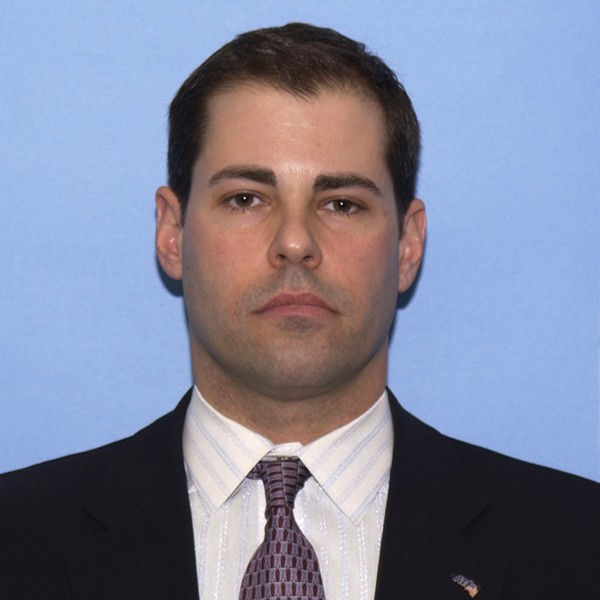If you scan the Internet for crime data about Rochester, you'll find dozens of press releases from the US Department of Justice. The lead sentences read pretty much the same: pleads guilty to homicide with a firearm. Guilty for transporting a firearm to Rochester from another state. Guilty to robbery involving a firearm.
There have been more than 175 killings in Rochester over the last five years, according to the Rochester Police Department. The deadliest year was 2013, with 42 homicides. And most of the homicides involved guns.
But as senseless and tragic as these events are, the number of homicides doesn't begin to show the magnitude of gun-related violence in cities such as Rochester. It doesn't include shootings, robberies, gun trafficking, and other gun-related crimes.
The proliferation of guns and gun-related violence are serious issues for local law enforcement. Where do all of the guns come from? How do they get into the hands of criminals? And what happens to the guns recovered at crime scenes?
These are the kinds of questions that a team of officers from the Bureau of Alcohol, Tobacco, Firearms, and Explosives were prepared to answer at a recent Tuesday Topics event at the Rochester Central Library. In a telephone interview prior to the event, ATF public information officer Charles Mulham talked about Rochester's gun problem.
The ATF is a law enforcement agency that operates under the US Department of Justice and has offices in major cities throughout the country. Rochester, for instance, has a team of officers that closely coordinates with local law enforcement and the ATF's larger office in New York City.
It's ATF officers' job to protect communities from acts of arson, bombing, and terrorism. They're also charged with preventing illegal trafficking of alcohol and tobacco.
But one of the agency's most important responsibilities, Mulham says, is preventing the illegal use and trafficking of firearms, usually referred to as handguns and long guns, such as shotguns. The ATF uses a variety of tactics, Mulham says, such as recovering and tracing illegal guns.
"It's not uncommon in New York City alone to have 12,000 weapons traced a year," he says. The ATF traced about 1,200 guns that were recovered in Rochester in 2012, he says.
But first, Rochester ATF officers have to acquire the guns.
Some guns are found at crime scenes. Others are confiscated through search warrants and during arrests. And almost every metropolitan police department in the country, including the Rochester Police Department, holds periodic gun buyback programs where residents turn in unwanted, and frequently unregistered, weapons.
The ATF obtains guns of all different models and quality, Mulham says. Some are old and cheap, he says, and some are expensive, sophisticated weapons. But the majority are small, inexpensive, and easy-to-conceal handguns, he says.
Long guns are also common in this area, he says, and they're a particularly dangerous street weapon.
"Normally, a 28-inch shotgun will be sawed off to bring it down to a 14-inch barrel to make it easier to hide," Mulham says. "But the bullets will hit the air faster and spread and cause more damage."
The Rochester ATF team gleans information from the guns, Mulham says, which is usually sent to the New York City office for tracing.
"Weapons have identifying marks," he says. "All firearms manufacturers, domestic or foreign, leave some kind of identification like a serial number. Some countries have what are called proof marks, a symbol or number."
Criminals often try to scratch off the serial number or even drill away the identifying marks on the guns, Mulham says, but it usually doesn't work.
The information can be used to determine everything from the make, model, and age of the gun to the state, city, and address where it was last sold. Tracing the origins can provide leads to other important information, such as crimes involving the weapon and possible suspects involved in the crimes.
The question many Rochester residents have is how do so many illegal guns get into the city in the first place? Where do they all come from?
Mulham says that most communities are either a market or a source for guns. In many instances, he says, a New York resident will go down to a Southern or Midwestern state with more relaxed gun laws to purchase weapons cheaply, or have someone there purchase them with the intent to resell them to a third party. Then the guns are transported to New York and resold at a significant markup.
"In this fairly basic example, the purchaser committed federal offenses," Mulham says.
But Rochester is a bit unusual compared to most cities in the state, he says. The Rochester ATF team finds that most guns recovered here are traced back to Rochester.
"Rochester is more of a market within, as opposed to a market that needs a [gun] source," he says. "The weapons are already here in Rochester and this area of the state."
That means that an abundant supply of guns exists in the community, Mulham says, and acquiring something small and cheap isn't difficult.
Like every consumer purchase, he says, guns fulfill a need.
"Narcotics and guns go hand and hand," he says. Whether the people are major or minor drug dealers, Mulham says, they all want to protect themselves and their business. Sections of Rochester's northeast quadrant are notorious for their drug-related gang activities, he says.
"Gangs can take on different appearances," Mulham says. "In Rochester, they are more like crews of young men. When you have high poverty and low graduation rates, that's a perfect recipe for high crime rates."
